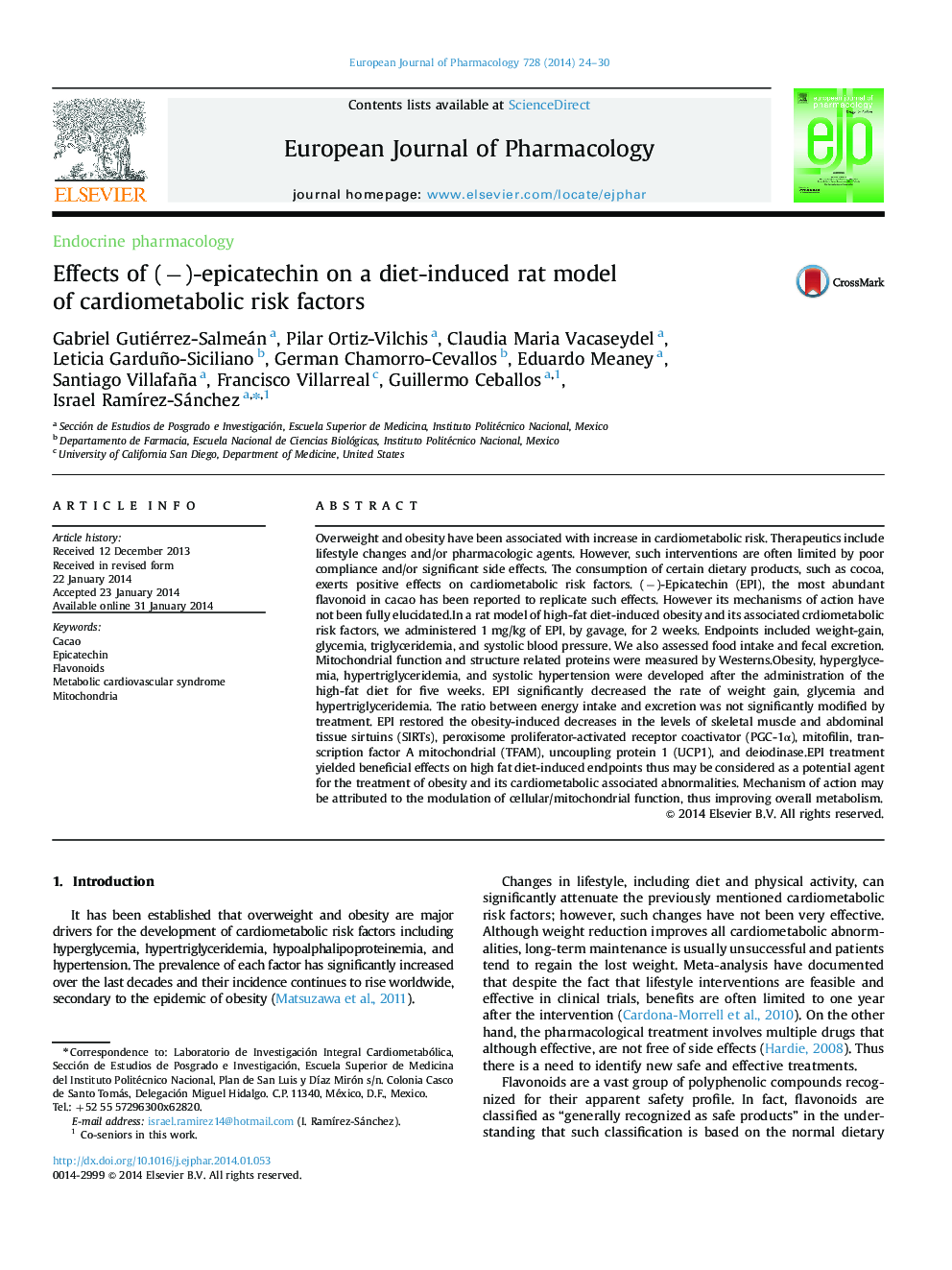| کد مقاله | کد نشریه | سال انتشار | مقاله انگلیسی | نسخه تمام متن |
|---|---|---|---|---|
| 2531854 | 1558953 | 2014 | 7 صفحه PDF | دانلود رایگان |

Overweight and obesity have been associated with increase in cardiometabolic risk. Therapeutics include lifestyle changes and/or pharmacologic agents. However, such interventions are often limited by poor compliance and/or significant side effects. The consumption of certain dietary products, such as cocoa, exerts positive effects on cardiometabolic risk factors. (−)-Epicatechin (EPI), the most abundant flavonoid in cacao has been reported to replicate such effects. However its mechanisms of action have not been fully elucidated.In a rat model of high-fat diet-induced obesity and its associated crdiometabolic risk factors, we administered 1 mg/kg of EPI, by gavage, for 2 weeks. Endpoints included weight-gain, glycemia, triglyceridemia, and systolic blood pressure. We also assessed food intake and fecal excretion. Mitochondrial function and structure related proteins were measured by Westerns.Obesity, hyperglycemia, hypertriglyceridemia, and systolic hypertension were developed after the administration of the high-fat diet for five weeks. EPI significantly decreased the rate of weight gain, glycemia and hypertriglyceridemia. The ratio between energy intake and excretion was not significantly modified by treatment. EPI restored the obesity-induced decreases in the levels of skeletal muscle and abdominal tissue sirtuins (SIRTs), peroxisome proliferator-activated receptor coactivator (PGC-1α), mitofilin, transcription factor A mitochondrial (TFAM), uncoupling protein 1 (UCP1), and deiodinase.EPI treatment yielded beneficial effects on high fat diet-induced endpoints thus may be considered as a potential agent for the treatment of obesity and its cardiometabolic associated abnormalities. Mechanism of action may be attributed to the modulation of cellular/mitochondrial function, thus improving overall metabolism.
Figure optionsDownload high-quality image (81 K)Download as PowerPoint slide
Journal: European Journal of Pharmacology - Volume 728, 5 April 2014, Pages 24–30